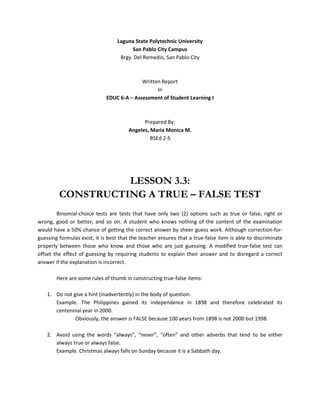The document provides guidelines for constructing effective true-false test items. It outlines 7 rules of thumb: 1) Do not provide hints in the statement, 2) Avoid absolute terms like "always" and "never", 3) Keep statements short to avoid ambiguity, 4) Avoid trick questions with minor errors, 5) Do not quote textbooks verbatim, 6) Avoid strong determiners that make the statement obviously true or false, and 7) Do not have an unbalanced number of true and false statements. Following these rules can help create true-false items that reliably discriminate between students who know the material and those guessing.

